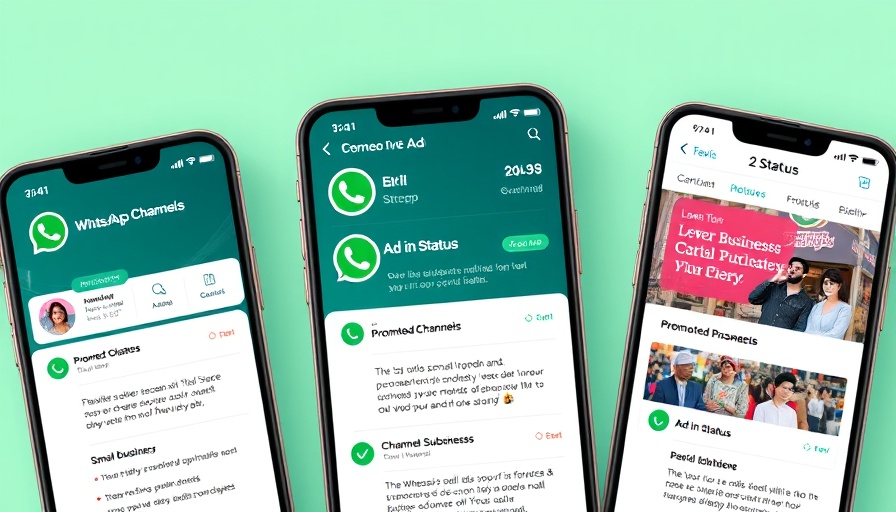
The Arrival of Ads on WhatsApp: What Small Businesses Need to Know
WhatsApp, the globally popular messaging platform, is set to introduce advertisements in its chat interface. This announcement marks a significant shift for a platform traditionally free from ads, as its parent company, Meta Platforms, aims to increase its revenue streams amidst growing competition and evolving user expectations.
Understanding the Impact of Ads on User Experience
The introduction of ads in WhatsApp might initially raise concerns about user experience. WhatsApp has maintained its reputation as a clean, user-friendly messaging service, devoid of commercial interruptions. However, this change could usher in new opportunities for small businesses to connect with their audience through highly targeted ads, which could blend seamlessly into the chat environment.
Ads as a Tool for Small Businesses
For small businesses looking to expand their reach, the advent of WhatsApp ads could prove to be a game changer. Given WhatsApp's vast user base, small businesses can reach potential customers directly in their messaging app. This ad strategy aligns well with the growing trend of conversational marketing, where brands engage customers through direct, personal messaging.
Through ad features on WhatsApp, businesses can utilize rich media formats that allow them to share videos, product images, and special promotions, aiding in direct sales and increasing brand visibility. Furthermore, the ability to target specific demographics ensures that advertisements reach the most relevant audiences.
Strategies for Using WhatsApp Ads Effectively
To maximize the potential of WhatsApp ads, businesses should consider the following strategies:
- Personalization: Tailor messages and ads to specific audience segments. Personalized ads can significantly increase engagement by speaking directly to the user's preferences.
- Engagement: Encourage users to engage by asking questions or offering incentives. This direct interaction can enhance customer loyalty and drive conversions.
- Tracking and Analytics: Utilize WhatsApp's analytics tools to track engagement and conversion rates. This data can inform future ad strategies and help optimize existing campaigns.
Prepare Your Business for the Future of Marketing
As the advertising landscape continues to evolve, it is essential for small businesses to stay ahead of the curve. The integration of ads into WhatsApp signifies a new phase of digital marketing where personal communication can be leveraged for brand promotion.
By adopting innovative strategies and embracing new platforms, businesses can create compelling narratives that resonate with their customers. WhatsApp ads can be a crucial component in a broader marketing strategy, aimed at not only selling products but also building lasting relationships with customers.
Insightful Emotions and Ethical Advertising
As ads roll out on WhatsApp, small businesses must also consider the ethical implications of this new advertising medium. While it offers opportunities, businesses should ensure that their messages are respectful and relevant to their audiences. Striking a balance between promotional content and meaningful communication will be key to maintaining customer trust.
Final Thoughts: The Need for Adaptation
In conclusion, the arrival of ads on WhatsApp presents both challenges and opportunities for small businesses. By leveraging this new platform with thoughtful strategies, businesses can pave the way for enhanced customer engagement and drive growth in the digital era. Embrace change, adapt to new trends, and strategize effectively to take your business to new heights.
 Add Row
Add Row  Add
Add 




Write A Comment